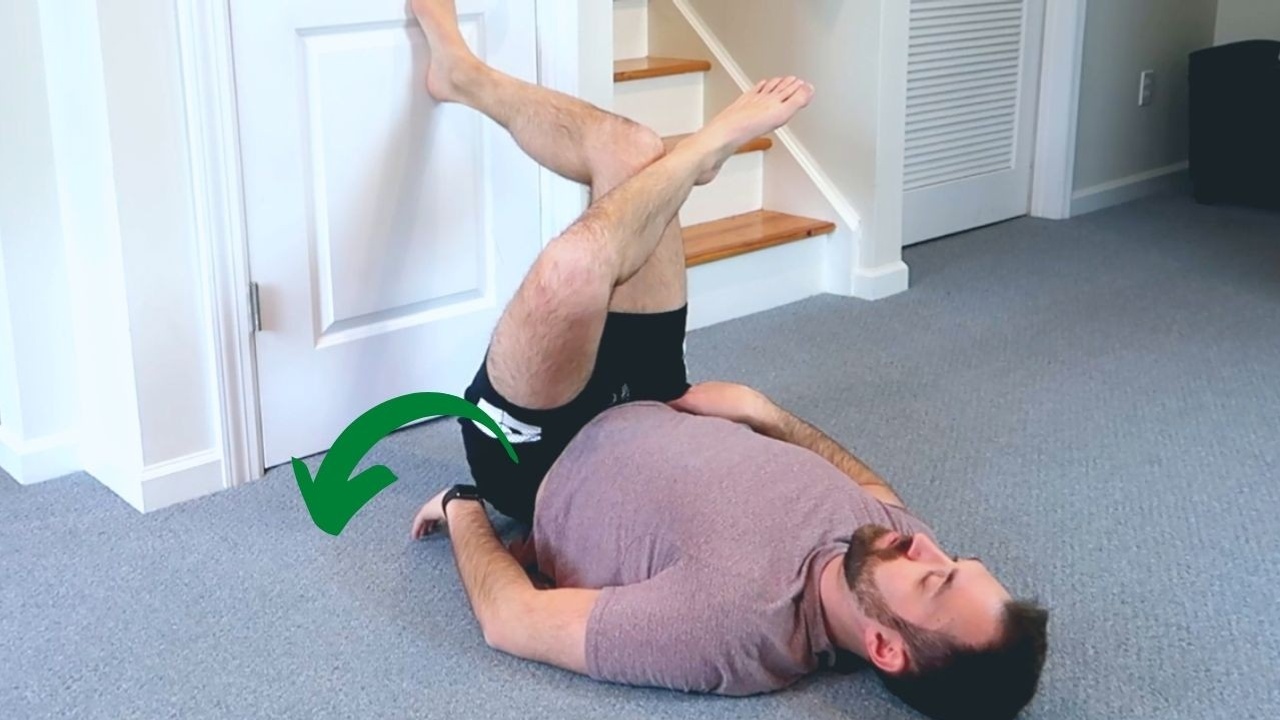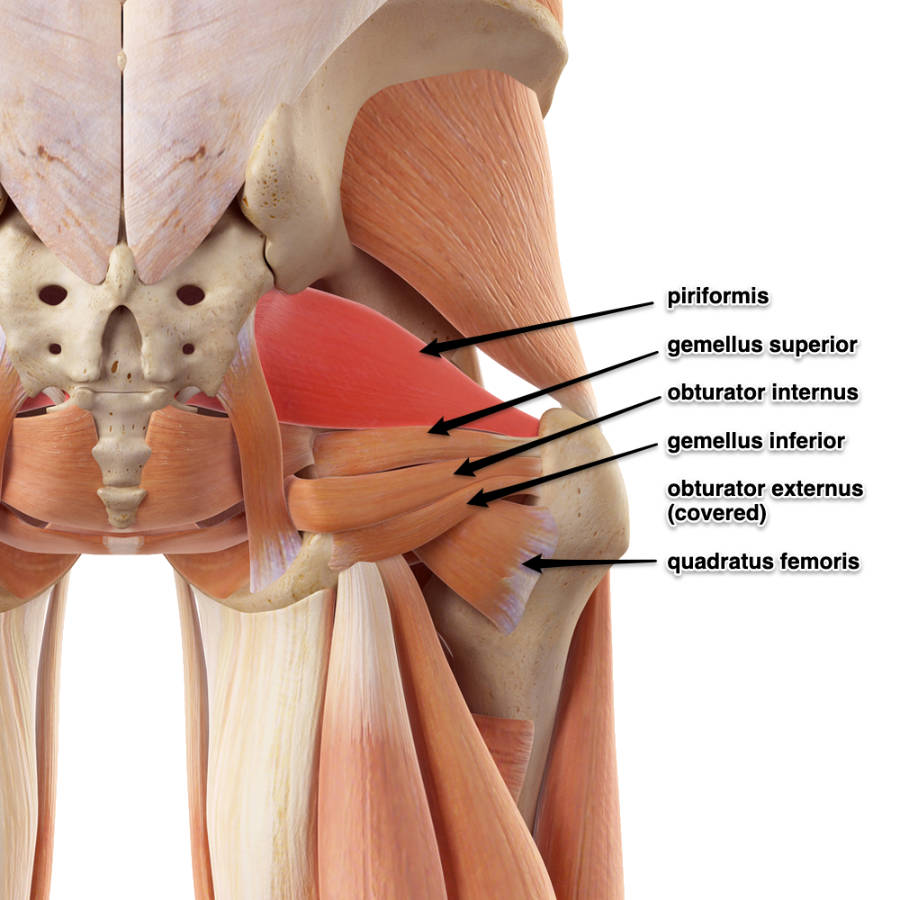The best exercises for hip external rotation you haven’t tried.
Dec 02, 2024
Have you tried EVERYTHING to improve hip external rotation but are still not seeing results? You’ve done so many clamshells and pigeon variations that you feel like you’re turning into a clamshell...or a pigeon.
Weeks, months and years working on hip external rotation and it’s still uncomfortable to sit with crossed legs. Or maybe you experience pain or stiffness in the lateral hip and you just need to release that area of the hips. Badly. Or maybe you just want to do a damn pigeon!
What gives!? There are two reasons why so many people struggle with improving hip external rotation. The first is that most stretches don’t provide enough time in the stretch. And the second reason is that many people start with exercises that are too advanced.
In this article, I’ll share with you 2 exercises that don’t run into these problems. They both share 2 important qualities. They are not too difficult and they require long holds. By allowing the body to sit in an accessible position for a long period of time it gets better at that position.
This is the exact opposite of what most exercises out there are like - too difficult with too short of a hold time. Hey, look if you’re already super flexible or a yogi then jumping into a challenging stretch for a few seconds might work for you. But this tutorial is not for those genetically blessed with flexibility.
This article is for people like me. Not naturally flexible and a history of stiff hips. Who work behind computer screens all day and want an effective way to open up their hips.
What muscles externally rotate the hip?
Before we get to the exercises, let’s get some housekeeping taken care of. In this section we will identify the hip external rotation muscles and demonstrate what a healthy amount of hip external range of motion (“ROM”) looks like.
The External Rotators of the Hip
There are many muscles involved in hip external rotation. Muscle action in the body is extremely complex and no one muscle only does one thing. Instead, the muscles work together to promote healthy movement and function.
In respect to hip external rotation, there is involvement from large well-known muscles such as the gluteus maximus, gluteus medius and gluteus minimus. There is also involvement from a group of lesser-known muscles nicknamed the “deep 6.” The “deep 6” are six small lateral hip muscles that contribute significantly to hip external rotation.

Finally, although not typically mentioned, the hip flexors also contribute significantly to hip external rotation. The iliopsoas, sartorius, TFL and other high hip flexors help the hip flex as it goes into hip external rotation.
Every movement in the body is facilitated by many muscles working together in balance. That is why it is difficult to blame one or two muscles for poor function in a particular movement pattern. This is demonstrated perfectly in the hip external rotation ROM test in the next section.
Testing for Normal Hip External Rotation ROM
To improve hip external rotation, we must first assess our current capacity. The below test measures your hip external rotation ROM in flexion.
If you were able to get your ankle on your knee on both sides without having to adjust your pelvis then congrats! You have great hip external rotation in flexion. If your pelvis did come off of the ground, do not despair! That is why we are here dear hipster. Onward we go.
The Best Hip External Rotation Exercises
As I explained earlier, I see two major problems with most exercises targeting hip external rotation. The length of time in the position is too short (i.e. clamshell) or the movement demands are too advanced (i.e. pigeon).
Below are exercises that are the exact opposite. They are accessible to just about everyone. And you will be in the position for a longer period of time so the body becomes familiar with the movement.
The Ultimate External Hip Rotator Stretch
The hip twist is one of my favorite hip external rotator stretches out there. I recommend staying in the position for at least 3 minutes per side. But if it feels good, stay in there even longer. I’ve stayed in this position for over 5 minutes per side at one point in my training.
The Ultimate Hip External Rotator Strengthening Exercise
To complement the passive hip twist, the active glute conversation is another great way to improve hip external rotation. Actively engaging the hip external rotators in a gentle way for 10 minutes is a great way to reintroduce function. This allows all the muscles in the hips and rest of the body to start communicating again.
If you want a weekly tip for healthier hips, sign up for my hipster newsletter. I send hipsters (subscribers) a new exercise or pain-brain tip every week. Click below to sign up.
What if I get hip pain with external rotation?
I assign these exercises specifically to individuals in hip external rotation pain. Oftentimes, it is not the movement that is the problem but the way in which people access the movement. If there is imbalance or compensation, the body will still find a way to access the position somehow.
But these dysfunctional methods can cause discomfort and pain. So it is not hip external rotation that is causing pain but the dysfunctional way in which the body tries to externally rotate the hips. The beauty about the hip twist and glute conversation is that they intentionally set up the body in a way to prevent compensation.
That is not to say that the body will not TRY to compensate - especially if you get hip pain in external rotation. This is why it is so important to ensure your alignment is optimal in the set up. If your body is in proper alignment then you can trust that it will figure out what to do.
Closing Thoughts
Improving hip external rotation is an admirable goal. But it's important to remember that the body does not work like a computer. Where we can isolate and target individual parts to improve.
Instead, the musculoskeletal system acts as a unified process where hundreds of muscles communicate with one another. Sometimes, the way to get better at a certain position is to zoom out and see how the whole body moves globally.
The common denominator in the two above exercises is that the whole body is involved. Although we are asking the hips to externally rotate, we are also asking other parts of the body to stay aligned, relax and maintain stability.
This is the path to not only improve hip external rotation but any movement in the body. Nothing in the body works in isolation. And the sooner you discover this in your movement practice, the sooner you'll start moving and feeling better.
